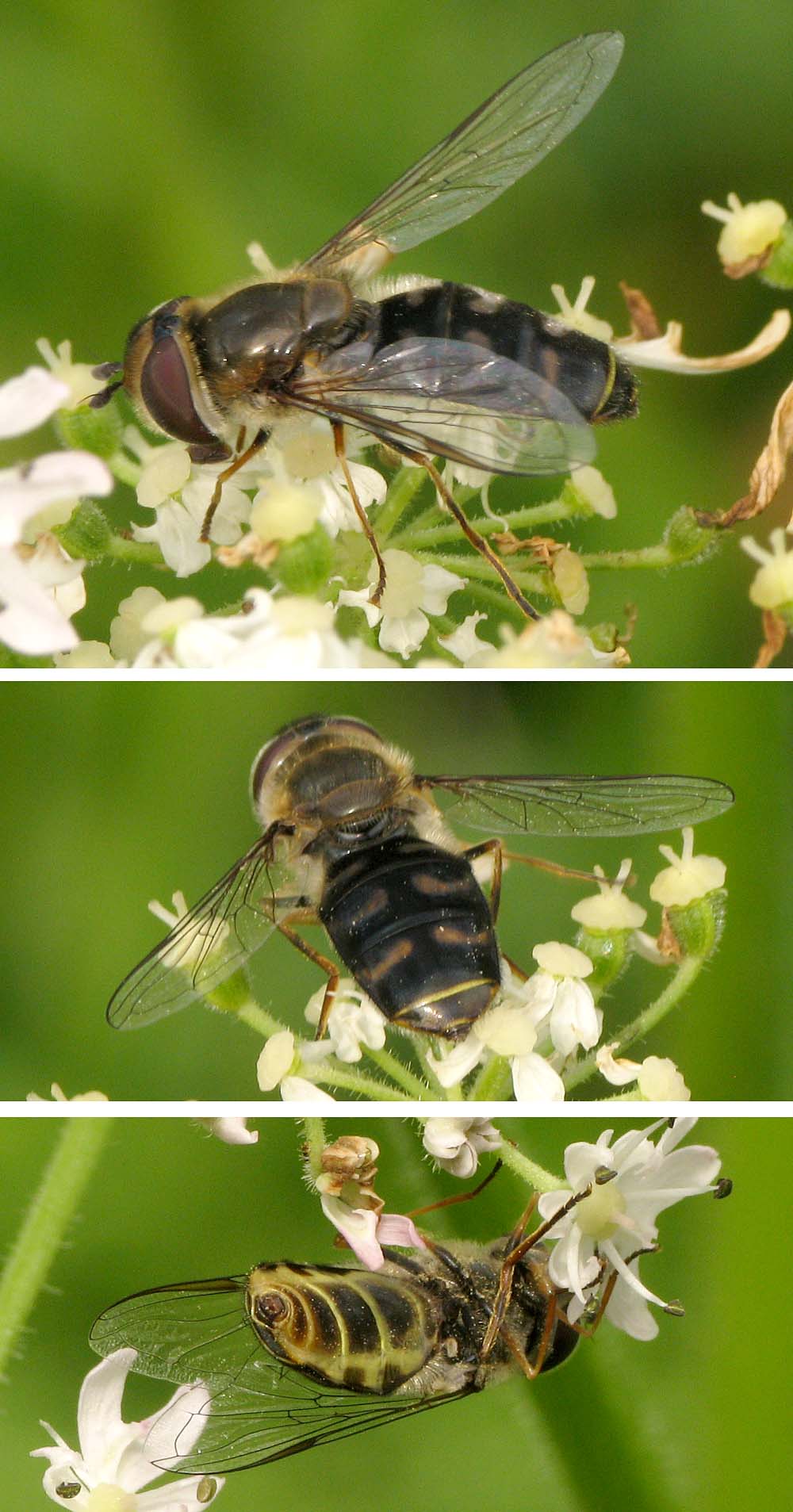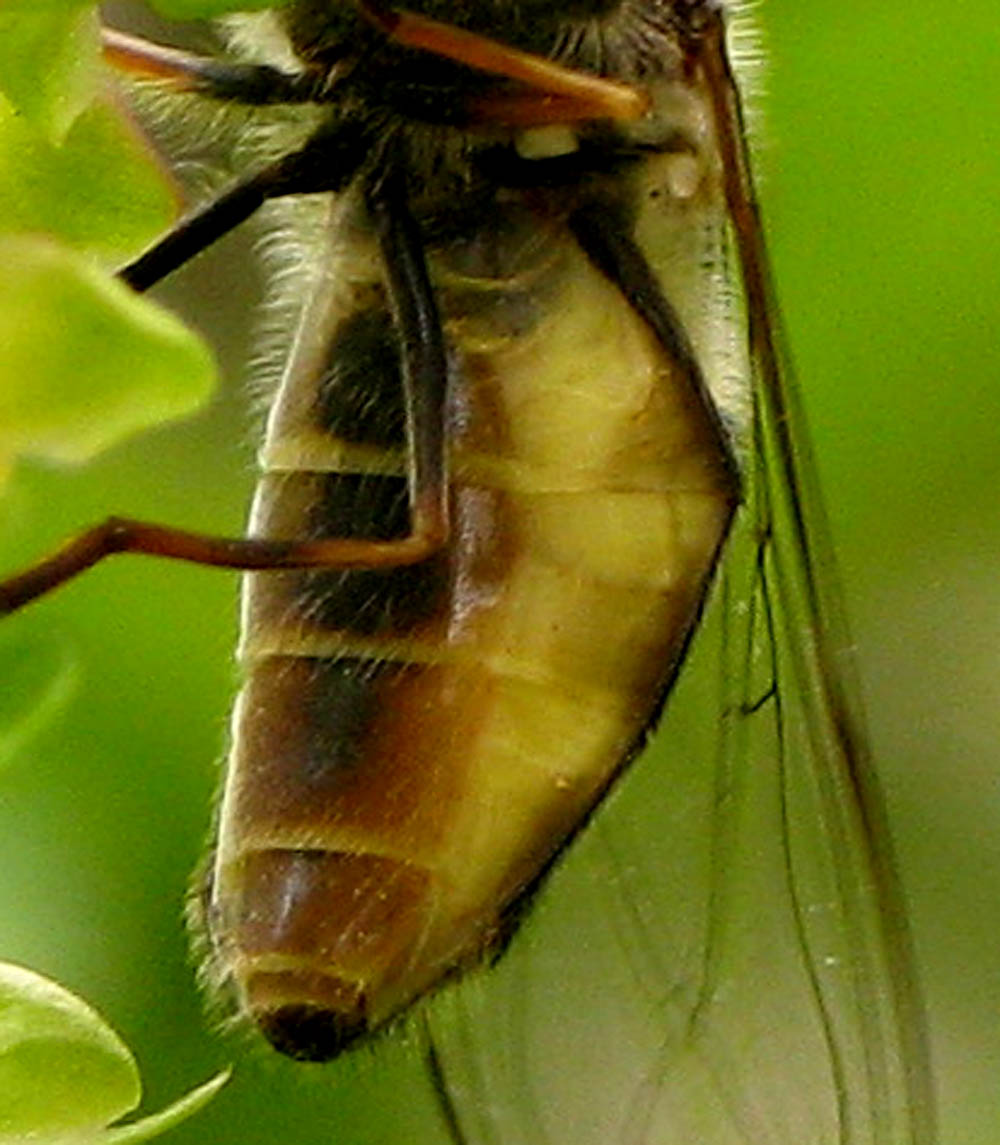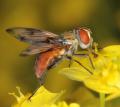Diptera.info :: Family forums :: Syrphidae
|
melanistic Scaeva - which?
|
|
| Sundew |
Posted on 01-11-2011 23:39
|
|
Member Location: Berlin and Baden-Württemberg, Germany Posts: 3938 Joined: 28.07.07 |
Hi, Here is a dark Scaeva female from Austria, Tyrol, Niederthai (1.500 m). I'd like it to name it S. pyrastri var. unicolor (see http://www.dipter...ead_id=126), but I am not fully convinced... S. pyrastri has white, oblique markings, but here the rather straight markings might have been basically yellow as in S. selenitica. The margins of the last tergites are yellow, too, and in the middle of the hind tibiae there is a dark ring like in S. selenitica. However, the dark sternite markings are square and broader than high, which fits S. pyrastri. Can we make a decision between the two species in this case? Many thanks for help, Sundew Sundew attached the following image:  [161.28Kb] |
|
|
|
| Menno Reemer |
Posted on 02-11-2011 17:06
|
|
Member Location: Posts: 343 Joined: 10.06.04 |
I would agree with S. selenitica, based on the characters you already mention (shape of markings on tergites, yellow posterior margin of tergite 4). I also think the black markings on the sternites are not square enough for S. pyrastri. |
|
|
|
| Sundew |
Posted on 02-11-2011 22:38
|
|
Member Location: Berlin and Baden-Württemberg, Germany Posts: 3938 Joined: 28.07.07 |
Many thanks, Menno - it's good to hear that you also tend to S. selenitica. However, the sternite markings are dubious. May be they are not square enough, but nevertheless they are broader than high. In S. selenitica it should be quite the opposite. I add a normal S. selenitica viewed from below for comparison. At least the dark center of the markings is higher than broad here. Ok, the upper fly is generally untypical. Is there a taxon name like "var. unicolor" for a melanistic appearance? Regards, Sundew Sundew attached the following image:  [132.41Kb] |
|
|
|
| Menno Reemer |
Posted on 03-11-2011 09:52
|
|
Member Location: Posts: 343 Joined: 10.06.04 |
As far as I'm aware there are no names available for colour varieties of S. selenitica. In S. pyrastri, var. unicolor has been found to occur only in females without ovaries (publications by Van Doesburg 1964, 1970 and Knutson 1971). The cause of this is is unclear, but might have something to do with parasitism in the larval or pupal stage. In certain genera, e.g. Platycheirus, Melanostoma, Pyrophaena, melanism seems to occur mainly in so-called 'intersexes': specimens with characters intermediate between male and female (eyes not touching but appoaching more closely than in females, postabdominal segments without male genitalia, but nevertheless 'thicker' and more asymmetric than in females). In many other syrphids, 'melanistic'individuals are just the dark end of a whole range from very dark to very pale individuals. In many cases this is correlated with temperature during the pupal stage (publications by Dusek & Laska, Mart Ottenheim, Jonathan Heal). This is why specimens in early spring, cold summers, at higher latitudes or altitudes tend to be darker than specimens from warmer places. I think the latter mechanism probably applies to your specimen of S. selenitica (from a high altitude...). It's a dark specimen, but the shape of the markings on the tergits is still visible, and the distribution of other dark and pale specimens is more or less as in normal specimens, albeit the dark parts are more extensive. This would also explain why the dark markings on the sternites are wider than you would expect. Similar kinds of variation in tergal and sternal markings can be noticed in e.g. Dasysyrphus and Eupeodes. |
|
|
|
| Sundew |
Posted on 03-11-2011 12:58
|
|
Member Location: Berlin and Baden-Württemberg, Germany Posts: 3938 Joined: 28.07.07 |
I highly appreciate your long and detailed explanation - thank you very much indeed! |
|
|
|
| Jump to Forum: |












